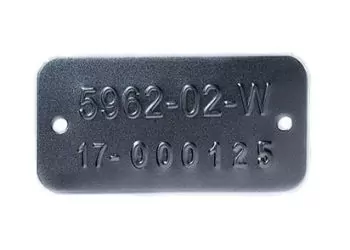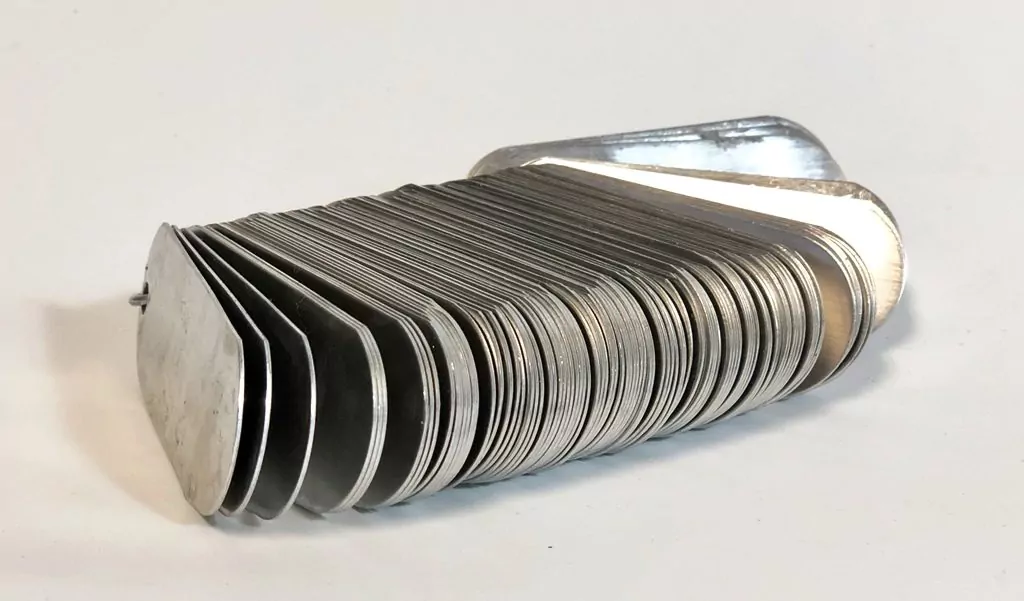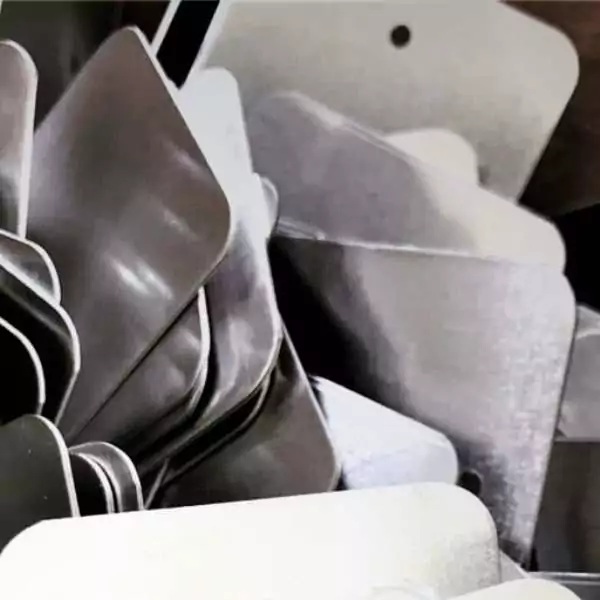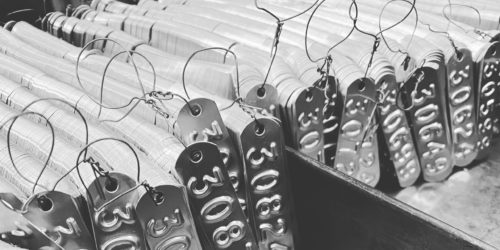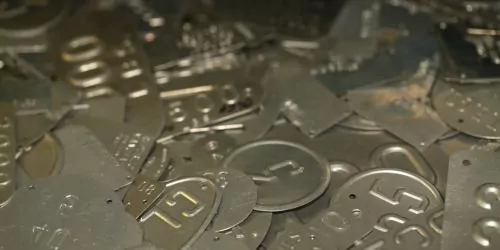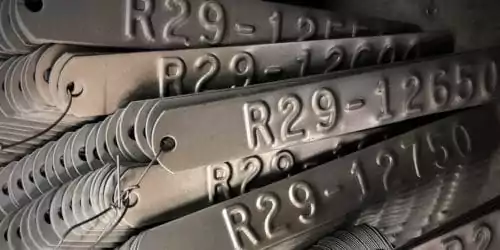What is a Crematory Tag?
Many people may not know what a cremation tag is. A cremation ID tag is a small metal disc that is attached to the cremated remains of a loved one. It usually has the person’s name, date of birth, and date of death engraved on it. This tag serves as a way to identify the right cremated remains, and it also provides important information for the funeral home or crematorium.
Numbered cremation ID tags or crematory tags provide an effective method for ensuring proper identification and traceability throughout the cremation process.
By assigning and marking with a unique number, organizations can maintain transparency and accuracy while processing remains in the cremation chamber or crematorium.
Application
Identification
When a body is brought into the crematory, it is immediately assigned a unique number indicated by a metal ID tag. This numbered tag stays with the body throughout the entire process, from start to finish.
In many cases, it follows all the way through to the family. This shows them that they are receiving the cremated remains which they are expecting.
Traceability
The cremation process is centered on the notion of traceability. Accurate tracing of remains is of utmost importance to the cremation organization or funeral homes, as well as the relatives of the deceased.
Every reputable cremation facility institutes a complete chain of custody, from beginning to end of the process.
Each step includes paperwork, sign offs, and checks to ensure everything is going accordingly.
This not only reduces the potential for mistakes, but allows for step by step tracing in the event of an error or mix-up.
Cremation Process Regulation
Industry-wide regulations require every crematory to follow specific rules and crematory laws when processing remains. The Cremation Association of North America (CANA) offers some of these guidelines for crematories to follow.
They specifically call for the use of unique identification numbers for accuracy throughout the process.
In addition, some state governments require this ID tagging by law.
Durability
The most common use for metal identification plates is in the industrial space. This type of application exposes the ID nameplates to wear, chemicals, sometimes weather, and more. While they are seen as a one-size-fits-all solution, specific uses may test their capabilities.
The cremation process involves exposure to fire, as well as extreme temperatures.
As with all tagging applications, the key to a successful ID solution is tailoring it to the exact needs and requirements for the environment it will be in. In this case, fire resistance.
Selecting an appropriate material and marking process is crucial to durability.
Materials
Stainless Steel
There are many types of stainless steel, each with slightly different properties.
Crematories most commonly utilize 304 stainless steel material for their identification number tags. 304 stainless steel has a melting point of 2000+°F. This is in excess of the 1400-1600°F which cremators reach.
With cremation chambers reaching these incredibly high temperatures, using this material ensures it will not be compromised by the harsh conditions.
These organizations must ensure their marking plates will hold up to the immense heat they will subject them to. It would not help if the metal simply melted or the information on the tag faded away after the process was completed.
Aluminum/Brass
While stainless steel is the most widely adopted by the industry, some organizations prefer to use other materials for various reasons.
Aluminum and brass are both incredibly durable options. They can be just as reliable in high heat environments, depending on the specific alloy used.
Marking Processes
Embossing
The most commonly used process for this type of identification is metal embossing. This upward marking is created using a male and female die set. Embossed designs are incredibly durable, making them a great candidate for this application.

In addition, if the raised characters were to get partially concealed by ash, the number will still remain legible.
Stamping
Stamping is as straightforward as it sounds. The process uses a heavy-duty stamp to embed a design into the material.
This stamp presses the information deep into the tag, providing a recessed appearance.
Stamped indentations are incredibly durable, lasting about as long as the metal material itself will. The impression is easy to read with clear characters as well.
Wrap-Up
Metal numbered tags are vital to cremation. They allow for complete transparency and traceability for families throughout the entire process.
The metal material ensures the nameplate will hold up to the extreme heat it will be exposed to. In addition, durable marking methods such as stamping and embossing maintain clear information.
If you are looking for a cremation tag, be sure to check out our selection! We offer a variety of different styles and designs to choose from.
REQUEST A FREE QUOTE
FILL OUT THE FORM, OR GIVE US A CALL:
Let us create a custom solution tailored to your unique needs and challenges.
The Metal Marker Advantage
We work with you closely to deliver high-quality tags that fulfill your expectations. And we’re honest when something is infeasible or impractical. We’ll propose an alternative solution that satisfies your requirements, budget, and timeline.
